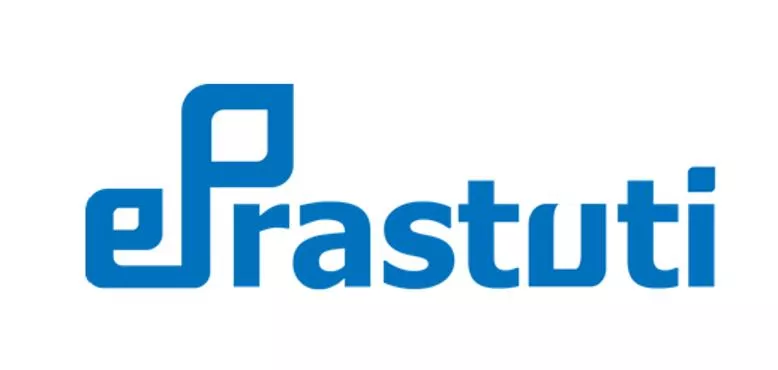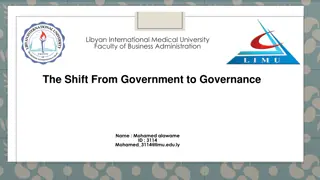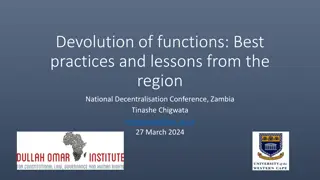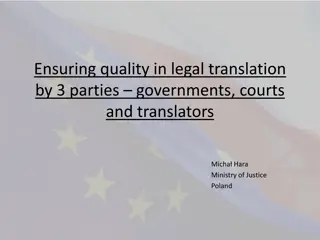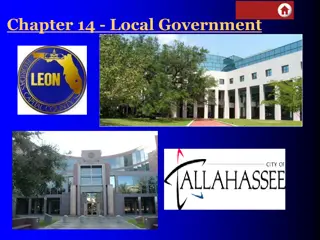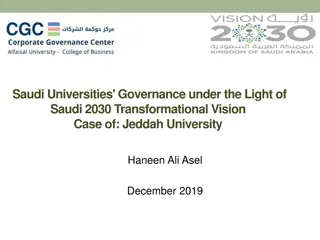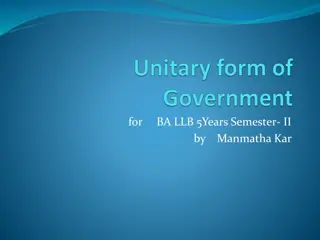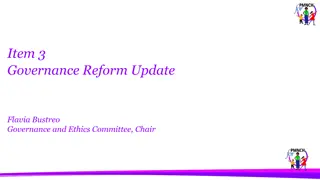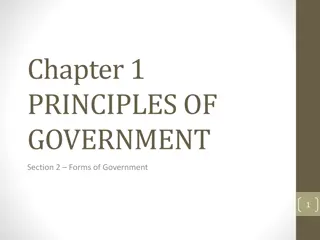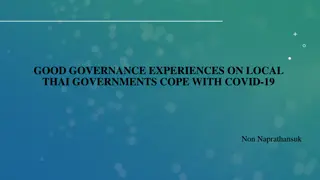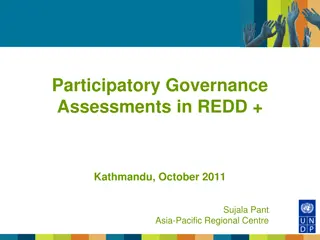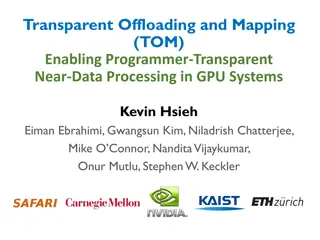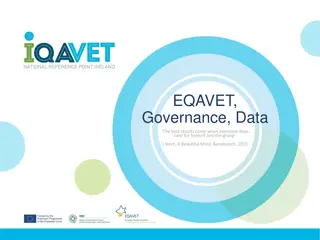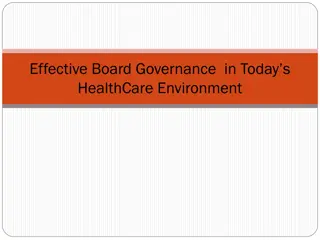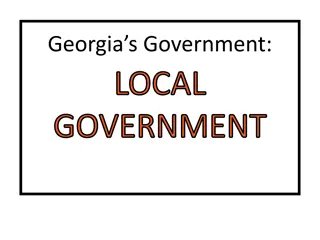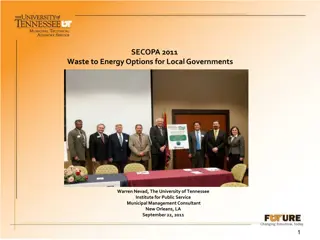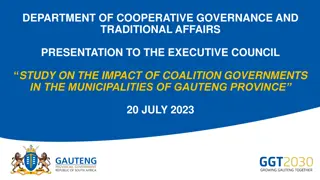Effective Management of Government Documents for Transparent Governance
Government documents play a crucial role in ensuring transparency, efficiency, and effective governance. This documentation covers the importance of document management systems (DMS), the lifecycle of a document, and how to effectively create, store, scan, search, retrieve, and share documents. Understanding the value of organizing and managing documents is essential for achieving streamlined government operations and decision-making processes.
Download Presentation

Please find below an Image/Link to download the presentation.
The content on the website is provided AS IS for your information and personal use only. It may not be sold, licensed, or shared on other websites without obtaining consent from the author. Download presentation by click this link. If you encounter any issues during the download, it is possible that the publisher has removed the file from their server.
E N D
Presentation Transcript
Standardisation Framework for Government Websites For a Transparent , Effective and Efficient Governance Master Trainers Certification Programme 2016 Topic: Document Management System
Agenda : Topics Understanding What is Document Management System (DMS) Why we need How to manage documents Scanning Basic features
What is a Document It is a piece of written, printed, drawn, presented or recorded representation of thoughts or electronic matter that provides information or evidence or that serves as an official record. A document is a written, Adocument is a form of information. A document can be put into an electronic form and stored in a computer as a file. Often a single document becomes a single file. A document can either be represented in electronic form (i.e. Word document, Spreadsheet file, Movie file, Sound clip, etc.) or as a traditional hardcopy consisting of one to thousands of pages.
Document Cont At the simplest level - all users who have a PC who set up folders into which they store word Docs, PDFs,PowerPoint presentations, Excel spreadsheets etc. are effectively generating a basic document folder structure to allow them to easily store, retrieve and expire document content.
Document Life Cycle The document goes through a sequence of steps from its creation to its eventual archival or destruction. The stages of a document s lifecycle include: creation, storage, categorizing, meta data tagging, delivery or sharing, repurposing, review and reporting, archiving and / or destruction Validity of a document : Allows a user to set the expiry of a document once it is published. Example may be some office orders which will have a definite time period to remain online/ published.
Document Life Cycle The status of a document is determined by different phases of the records lifecycle. A Quick start Guide
How do we manage the documents Create Edit Store Scan Search Tracking Retrieving Sharing Publishling
The functions for these systems include Creation of Document Storing various document types, including word- processing files, emails, PDFs and spreadsheets. Searching an entire library of files by individual keyword. Restricting access to certain documents. Monitoring who is viewing documents and when Tracking edits being made to documents Retrieving previous versions of edited documents Controlling and regulating when out-of-date documents can be deleted Accessing, editing and sharing documents via mobile devices
Management of Documents Document management is how your organization stores, manages and tracks its electronic documents. It focuses on managing documents, (like Word files). Each unit of information (document) is fairly large and self-contained. There are few (if any) links between documents.
Creation of Document Document creation (also known as document automation, document generation, or document assembly) allows you to convert text-based documents (typically, word-processing files) and PDF forms into powerful productivity tools called templates. Word processing is defined as the creation of a document with a computerized device. The creation, input, editing, and production of documents and texts by means of computer systems . The methodology of document management is content-driven.
Storage A document is created in the computer how do we store it ???? The goal is efficiency. Approving documents faster, reducing manual data entry and automating recurring tasks are some of the many functions of document management that work toward this goal. Security, confidentiality, accessibility, compliance with your local and global rules and regulations and long term preservation of documents. Scanning
How to Access a Document Folder Folder Structure- A standard folder structure is an important component of organizing documents in the system. The user will be required to follow a standard folder structure based on most GOA departments along with custom folders added based on user Requirements. Folders could further have sub folders. For Example: A sample folder structure is provided below for reference- Here you give GoA folder structures as per e-Prastuti guidelines 1.Circular 1.1Internal 1.1.1 Division 1 1.1.2 Division 2 1.1.3 Division..n 1.2 External
Folder Naming Convention Rules Leave LTA Medical Promotion Reports Annual Reports Year Monthly Progress Reports (Current year is default) Year Month
Scanning Contents may be stored or uploaded (in server/internet )by Scanning Scanning is digitizing a document.-process whereby a document is converted from print to a computer-readable format they can be transmitted, displayed, and printed. It is done with the help of a electronic device called scanner. A scanner is a hardware input device for a computer. Scanners allow a user to take a printed picture, drawing, or document (hard copy) and convert it into a digital file (either an image or a text file) so that it can stored, viewed, and edited on a computer.
Tips for Scanning The documents are identified by individual units for scanning are collected . Make sure that the scanned documents are readable. Certain measures are to be taken into consideration. They are like identifying documents, clean documents , meta data ,what meta data will go into it file format If DPI (Dots Per Inch) is more, the photo is sharp but the size of the file is more. If DPI is less, the photo is dull but the size of the file is less. Capture at a high-enough dpi (dots per inch) level to render the image clearly (300 DPI ) and maximum file size is 24 MB Any external annexure like photographs is to be fixed carefully and neatly, if required with glue.
Tips for Scanning 2 Proper Dusting of the document Dust may affect the quality of the image. Ironing and Smoothening of the document This is done in the case of documents that are folded at the edges. Page Numbering-Each page of the document is numbered on the corner Save all documents scanned in PDF format. (Portable Document Format) a file format for capturing and sending electronic documents in exactly the intended format. Saving a document in PDF . You are safe of any temper. and it compresses files.
What is Meta data Metadata means "data about data.It is data that describes other data. Means of creation of the data Purpose of the data Time and date of creation Creator or author of the data Location on a computer network where the data was created Standards used File size
More on Metadata Data that serves to provide context or additional information about other data. For example, information about the title, subject, author, typeface, enhancements, and size of the data file of a document constitute metadata about that document. It may also describe the conditions under which the data stored in a database was acquired, its accuracy, date, time, method of compilation and processing, etc.
Metadata Cont.. For example, a digital image may include metadata that describes how large the picture is, the color depth, the image resolution, when the image was created, the shutter speed, and other data. A text document's metadata may contain information about how long the document is, who the author is, when the document was written, and a short summary of the document. Metadata within web pages can also contain descriptions of page content, as well as key words linked to the content. The use of metadata on web pages can be very important. Metadata for web pages contain descriptions of the page s contents, as well as keywords linked to the content. These are usually expressed in the form of metatags.
Metadata Consist of following Fields Additional Meta Data can also consists of below fields- Document Date Document Type Report Number Volume Number Country State Document Name Defined Key Words Language Major Sector Relative Project ID Region6Report Title Sector Topics6Sub Topics Unit Owning
Keywords A word or concept of great significance. (A subset of Reference ) A word used by a search engine in its search for relevant Web pages. A term used as a keyword to retrieve documents in an information system such as a catalog or a search engine. Keywords are the words and phrases that Internet users type into search box of a search engine, such as Google, to find what websites that match what are looking for.
Why Keywords are important Keywords are very important for every website as searches are based on that. Both users and search engine depends on them. choosing suitable keywords is an art. Keyword research is the foundation on which your whole content creation should take place
Difference between a keyword and Metadata A keyword is a word or phrase that is a topic of significance that helps visitors and search engines understand the purpose of your page. Search engines look for these keywords in a page's URL, headers, titles, paragraph tags, and image alt text. Meta tags consist of Keywords, Description, Title and Note Keywords are descriptive words or phrases that are separated by commas and attached to the web pages. While Meta tags consist of Description, Keywords and Title
Guidelines for creation of Document Repoistory 1. Identification of various types of documents (Acts, Policies, Guidelines, Office Orders, Notifications, etc.). 2. Categorization and segregation of documents based on their type, uniquely identifying the documents using a standard naming convention. 3. Creation of folders/sub folders based on the categorization. 4. Finalization of Meta Data (Title, Description, Type, Author, Language, Audience, Keywords, etc.) for each document. This will help in searching for and retrieving the document. 5. Scanning the documents and storing them in the appropriate folders/sub folders. 6. Uploading the scanned documents with the metadata into the KMS database. 7. Storing of physical documents in accordance with the guidelines.
Definations A bit has a single binary value, either 0 or 1. The bit is a basic unit of information in computing and digital communications. DPI stands for Dots Per Inch which technically means printer dots per inch. Dots per inch (dpi) is a measure of the sharpness of the image or document . DPI, which is a paper dots per inch, does count when scanning. When an image is scanned, one scanning "dot" equals one digital image pixel. You are converting an object with physical dimensions to digital pixel dimensions.
Security It basically determines who can log on the system and which folders or files individuals can open. It determines a range of actions, including adding,pages, annotating, copying, or deleting records.
Benefits of Document Management System 1. 2. Improve staff productivity Reduce costs associated with manual document Paper less business efficiency. Promote sharing of knowledge and information Enhance corporate transparency and governance E-mail and fax files instantly Access documents while traveling Remote Document Access Publish documents to CD, DVD or the web, as appropriate Audit Trail shows who has accessed the documents. 3. 4. 5. 6. 7. 8.
Audit Trail Audit trail is the complete history or log of any activity being performed on a document. These activities can be creation, modification, copying, moving, deletion and so forth. Administrators or managers can view the audit log and identify each step in the process the document goes through
Thank you Aziza Yasmin Rahman , Scientist-B , National Informatics Centre eMail: wdc.assam@gov.in Website: http://wdc.assam.gov.in



